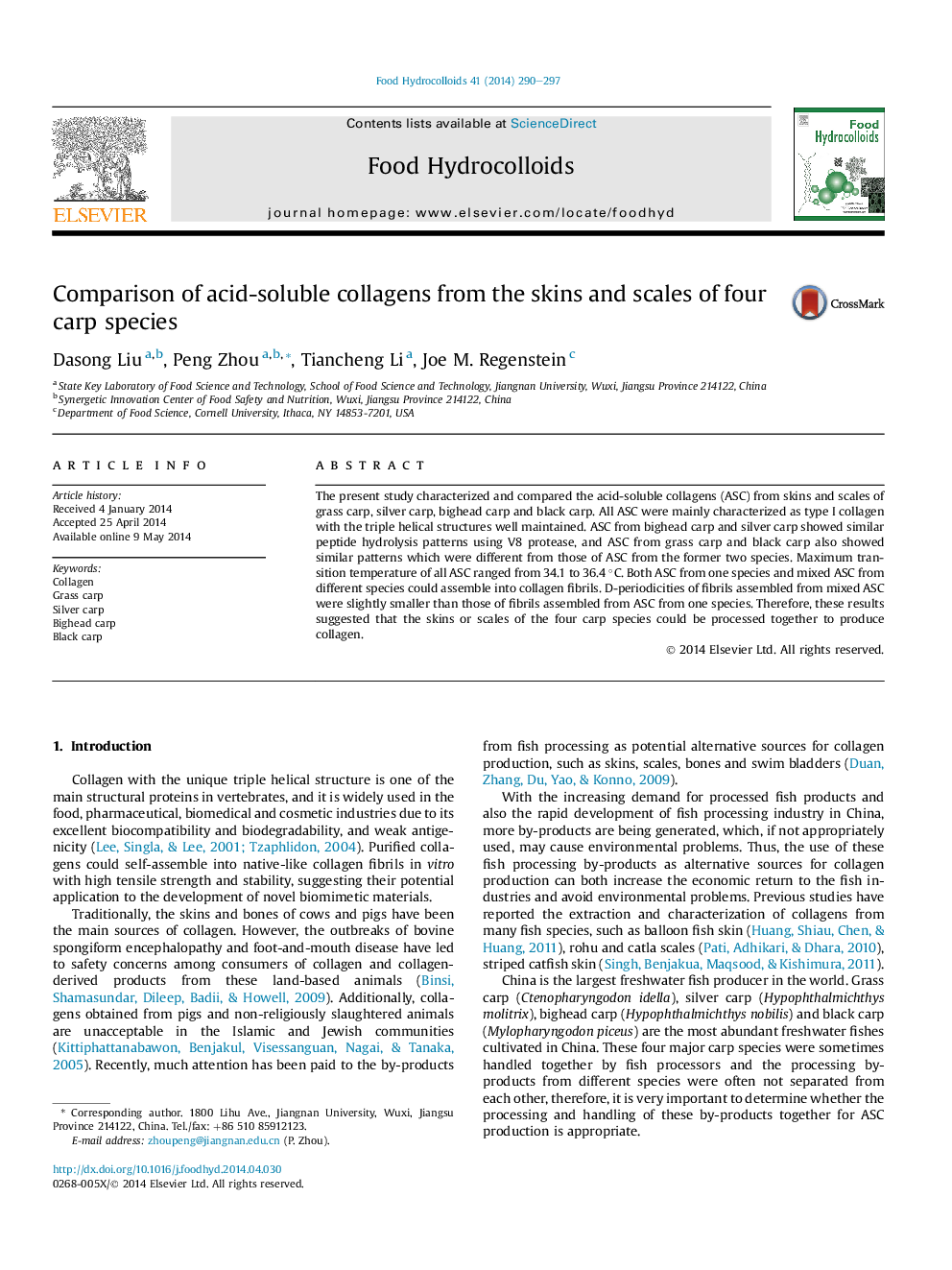| Article ID | Journal | Published Year | Pages | File Type |
|---|---|---|---|---|
| 605067 | Food Hydrocolloids | 2014 | 8 Pages |
•All ASCs were mainly identified as type I collagen with three different α chains.•Grass/black carp differ slightly from bighead/silver carp in ASC primary structure.•All ASCs had nearly similar high thermal stability.•All ASCs formed native-like collagen fibrils in vitro.
The present study characterized and compared the acid-soluble collagens (ASC) from skins and scales of grass carp, silver carp, bighead carp and black carp. All ASC were mainly characterized as type I collagen with the triple helical structures well maintained. ASC from bighead carp and silver carp showed similar peptide hydrolysis patterns using V8 protease, and ASC from grass carp and black carp also showed similar patterns which were different from those of ASC from the former two species. Maximum transition temperature of all ASC ranged from 34.1 to 36.4 °C. Both ASC from one species and mixed ASC from different species could assemble into collagen fibrils. D-periodicities of fibrils assembled from mixed ASC were slightly smaller than those of fibrils assembled from ASC from one species. Therefore, these results suggested that the skins or scales of the four carp species could be processed together to produce collagen.
Graphical abstractFigure optionsDownload full-size imageDownload as PowerPoint slide
